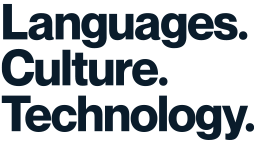Online Collaborative Learning in Lockdown
December 2019, in Wuhan, China, Covid-19 first appeared, shutting down the city. At that time the rest of the world generally assumed that the story would stop there. Eight months later, every continent has been affected, with mass school closures, economies grinding to a halt, businesses rapidly pivoting to online sales and national workforces transitioning to work-from-home arrangements.
We have a choice in such challenging times. We can look inwards, put our heads down and focus on ourselves and our immediate environment, or we can open our minds and hearts to the world and others around us. And, of course, we can manage a balance of both. Covid-19 has shown us in very real terms, how interconnected we are, how globalisation brings challenges with its benefits and how truly interdependent we collectively are. It is the perfect lesson in the importance of Global Competence and how, as educators, we must never lose sight of the importance of developing global perspectives in students.
With a second wave resurgence of Covid-19 in Australia and New Zealand, schools are realising that being prepared to pivot to online learning at any point is essential. In Victoria, Australia and other parts of the world, online learning is already the indefinite norm for many year levels. In the UK, more than 60 schools have experienced outbreaks in the first week of the new school year, with schools already being shut down. Education systems globally know that a pivot to online learning for an indefinite timeline is the reality, until a safe and effective vaccine is found and widely available.
Online collaboration
As schools switch to/back to online learning, designing engaging online collaborative tasks, just like in the classroom, is essential to keep students engaged and learning. Without these tasks, students will be working in individual silos, without opportunities to connect socially or develop the collaboration and communication skills they would have had in the daily group work tasks across different subjects. Online collaboration requires good planning and a considered choice of platforms. It may also require educators to step outside their comfort zone and make attempts into new and different approaches to learning and new platforms. This is best approached as an ongoing process, starting off gradually, with one or two tasks on select platforms, moving onto different platforms and tasks over time.
Some different platforms to consider:
‘In real time’ or synchronously: Video Conferencing e.g. Zoom, Microsoft Teams, work well for discussion or activities such as debates, discussions, or performance- type tasks. For the Google Classroom fans, Google Meet is a synchronous option (with the option to use Jamboards in the meeting), with the rest of the suite set up for asynchronous collaborative tasks e.g. docs, forms, etc.
‘In your own time’ or asynchronously: Flipgrid has to be one of the big winners of #remotelearning, with increasing uptake in schools and Voicethread offers a range of features.
Both: Some platforms cleverly allow collaboration both in real time and ‘across’ time. There’s a wide range of collaborative ‘blackboards’ or spaces for brainstorming available e.g. Blackboard Collaborate, Nearpod, Padlet, MiroHQ, Google Jamboards and other tools such as Parlay allow for remote class discussions.
Further considerations for online collaboration planning include:
1. Who is collaborating? Size of groups. Teacher present or absent?
2. What are they collaborating on? Discrete vs open ended tasks. Task difficulty.
3. When are they collaborating? Open ended or structured times? Synchronous vs Asynchronous.
4. Where are they collaborating? Safe, online platform? Who has access? What functions of the platform can be used e.g. chat function or interactive whiteboard while video conferencing.
5. Why are they collaborating? Suitable task selection? Task best suited to collaboration?
6. How are they collaborating? Setting roles? Guidelines? Resolving issues?
Global collaboration
As scientists globally try to crack the code for a safe Covid-19 vaccine, their ability to work together to share their expertise and knowledge and collaborate across national borders and cultures, could literally save millions of lives. Global collaboration is a skill that includes a range of sub-skills, including intercultural understanding, problem-solving and communication skills. With a rise in racism linked to Covid-19, we need young people with cross-cultural skills who can sift through biased media messaging about ‘the China virus.’ They need to continue to show respect, understanding and empathy to all cultures and nationalities. The current situation provides students with an excellent opportunity to work on global collaboration projects, which combines online collaborative skills and global perspectives. Flat Connections and IEarn are worth exploring and IEarn USA have published the Teachers Guide To Global Collaboration and the Asia Education Foundation have a Global Collaboration Toolkit for those wanting to find out more. Global collaboration is a wonderful way to turn students’ minds towards the wider world and implement learning without borders.
“We are stronger together than we are alone.”
– Walter Payton
No one would ever wish for our education systems to be so disrupted, but I encourage educators worldwide to embrace the opportunities Covid-19 has presented to schools, to actively identify and work on leveraging the positives. The opportunities for students to develop their digital literacy and digital citizenship skills is, in a word we are all familiar with, unprecedented. Education can now focus on student-centred pedagogies and online or global collaborative opportunities. Covid-19 has given us a unique opportunity to develop our collective consciousness – do we look outwards or inwards as we move forward?
8 September 2020 | Written by Lottie Dowling






